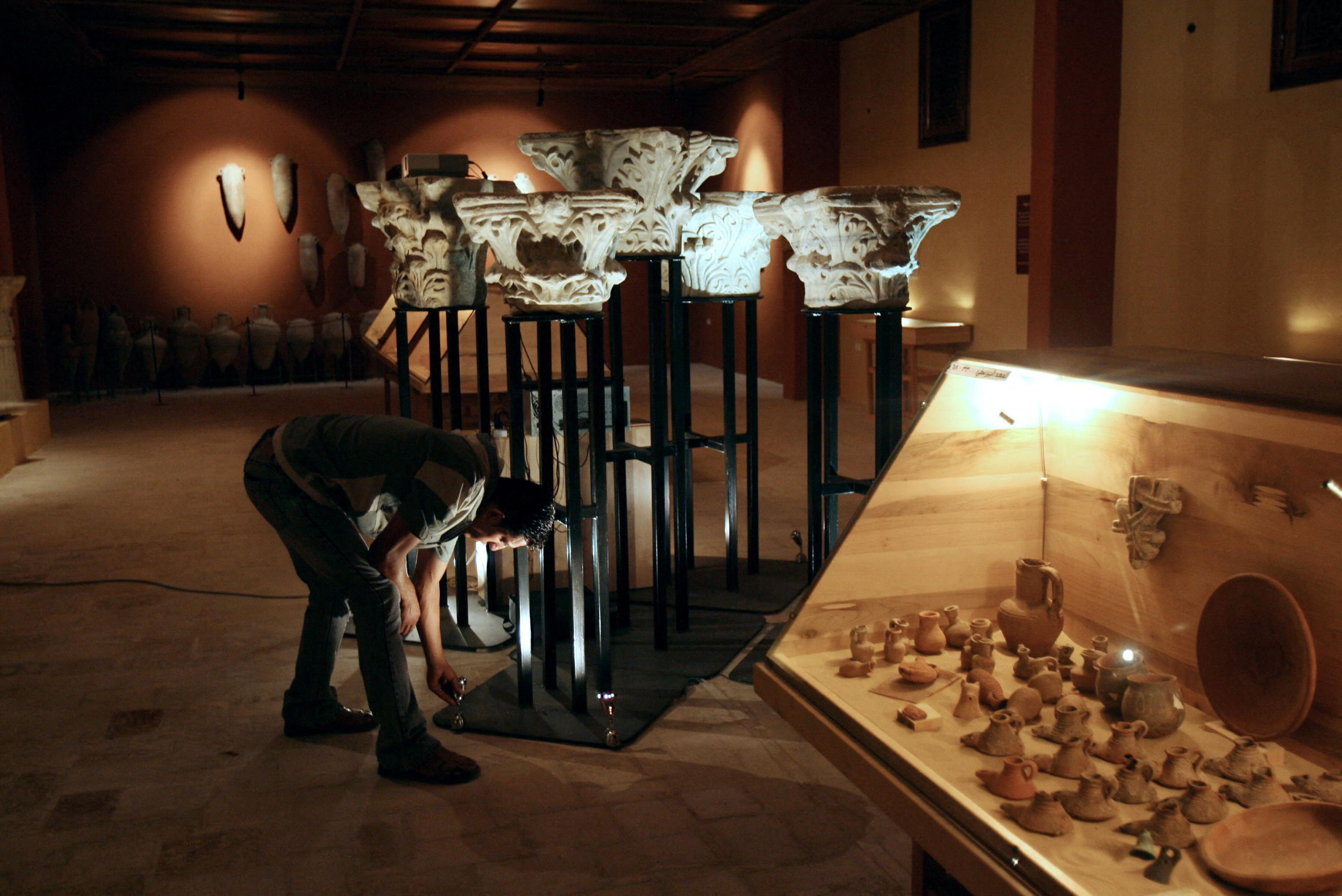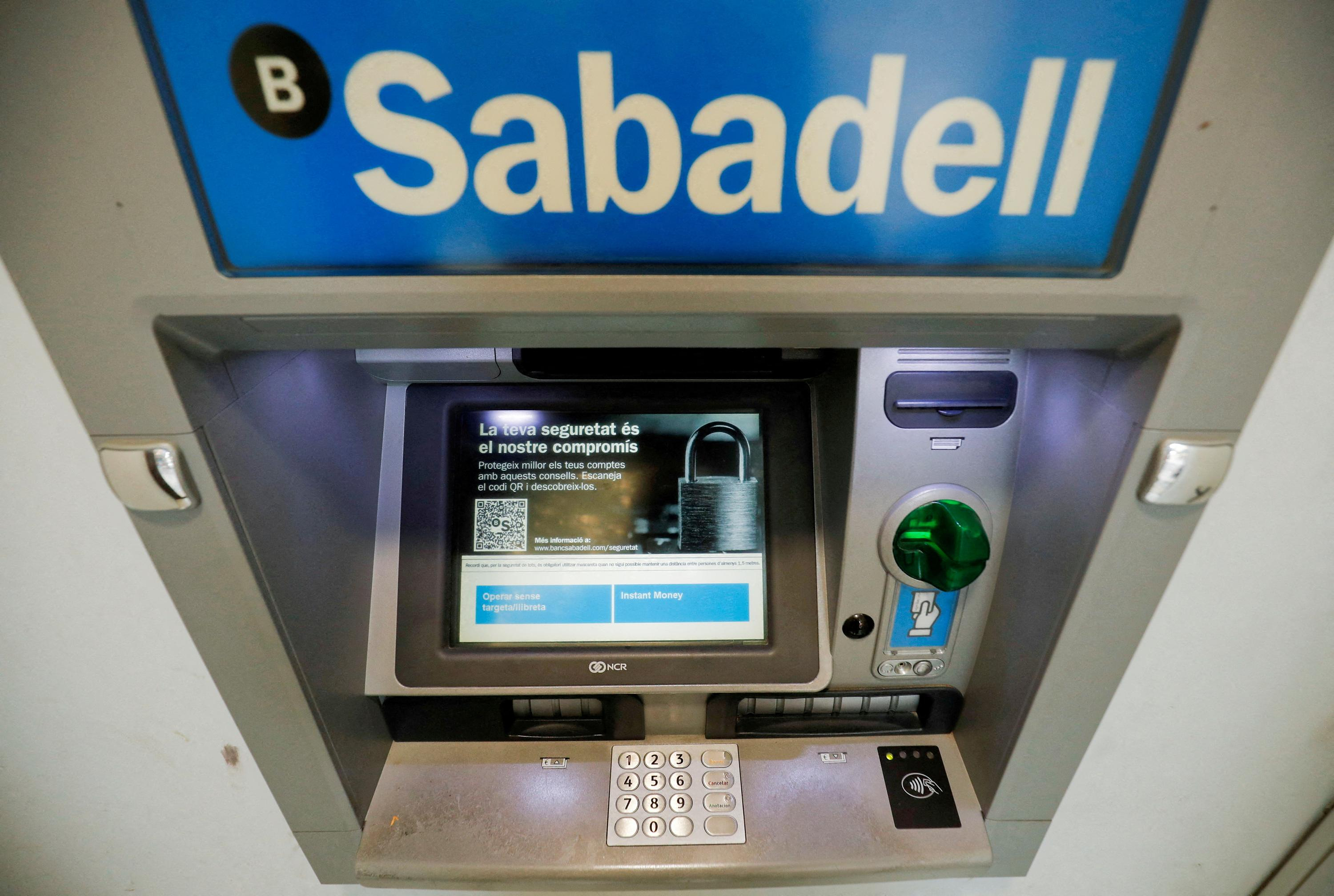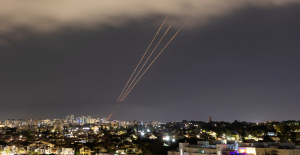“Napoleon’s palace”, destroyed. The site of ancient Anthédon, ravaged. The only private museum, burned down. The cultural heritage of Gaza pays a heavy price in the war, but in a curious turn of events, part of its treasures remains safe in Switzerland. Every day, with access to electricity and the internet, Palestinian archaeologist Fadel al-Otol receives photos showing in near real time the state of ancient sites.
As a teenager, Fadel al-Otol studied stones, before working for European archaeological missions. Today, the forty-year-old, trained in Geneva and at the Louvre, is the control tower of a vast network of archaeologists in Gaza: around forty young people trained to excavate the ground, reconstruct the past in 3D and preserve heritage.
In the wake of the military campaign launched by Israel on the Gaza Strip, in retaliation for the attack by the Palestinian Islamist movement Hamas on October 7, archaeological sites have suffered a hard blow, with Unesco saying it has so far confirmed damage at 41 sites based on satellite images. Fadel al-Otol's team is working at ground level. “All archaeological remains in northern Gaza have been affected. The site of Blakhiya, the ancient Greek city of Anthedon, was directly bombarded. There is a huge hole. The part of the site that we had not started to excavate was affected,” explains Fadel al-Otol about this site located near Hamas barracks.
On the Israeli side, the attack on October 7 resulted in the death of more than 1,170 people, mostly civilians, according to an AFP count based on official Israeli data. In the Gaza Strip, Israeli reprisals have left more than 33,700 dead, mostly civilians, according to the Hamas Health Ministry. And led to enormous destruction.
“In the old city of Gaza, the al-Basha palace is completely destroyed. There were bombings and bulldozers went over them. There were hundreds of ancient objects and magnificent sarcophagi,” said Fadel al-Otol, reached by telephone, before sharing recent photos of the ruined places. This palace of ocher sand stone had been erected from the 13th century and was known by the Palestinians of Gaza for having hosted Bonaparte at the very end of the 18th century during the Egyptian campaign.
“Our best finds were exhibited in the Bacha. Did someone take things out before blowing up the building? We know very little” at this stage, underlines Jean-Baptiste Humbert, of the French Biblical and Archaeological School of Jerusalem (Ebaf).
In Israel and the Palestinian Territories, archeology is a highly political subject, with many discoveries having been used to justify the claims of one side or another. If Israel has an arsenal of archaeologists who report an impressive number of ancient treasures, this sector has remained more fallow in Gaza, despite a rich past which stretches over millennia and whose vestiges were stored at the Ebaf warehouse and at the al-Bacha Palace museum.
Israeli soldiers entered the Ebaf warehouse in Gaza City, with Israeli Antiquities Director Eli Escusido posting a video on Instagram of soldiers surrounded by ancient vases and pottery, sparking strong reactions Palestinians accusing the army of looting the site. “My colleagues were able to return to the scene. There was some upheaval. The soldiers opened boxes. We don’t know if they took anything,” archaeologist and researcher at Ebaf, René Elter, told AFP, saying however that he had not noticed a desire for “state looting”.
“Every day when Fadel calls me, I am afraid that he will tell me that one of our colleagues has died or that he will tell me that a certain site has been destroyed,” he says. The only anchorage offering natural protection between the Sinai and Lebanon, Gaza was for centuries a crossroads of civilizations, a relay between Africa and Asia, a hub for the incense trade, in turn giving rise to desires of the Egyptians, the Persians, the Greeks, the Romans, the Ottomans...
Over the past decades, this glorious past has been explored by the workers of Jawdat Khoudary, a private collector. In the 1990s, after the Oslo Accords and the creation of the Palestinian Authority, Gaza experienced a real estate boom. However, when the workers dig into the ground, they discover ancient objects. Local construction magnate, Jawdat Khoudary accumulates objects in his residence, a treasure that he opens to foreign archaeologists on site including the Dominican Jean-Baptiste Humbert, pillar of the Anthédon excavations.
In 2004, Brother Humbert invited to Gaza his colleague Marc-André Haldimann, then curator of the Museum of Art and History of Geneva (MAH), fascinated by excavations which led to the exhumation at Saint-Pierre Cathedral in Geneva ancient amphorae from Gaza, because at the beginning of Christianity, he recalls, “it was the vineyard closest to Jerusalem and therefore best representing the blood of Christ”.
Arriving in Gaza, in the gardens of Jawdat Khoudary, the Genevan archaeologist could not believe his eyes. “We found ourselves in front of 4,000 objects including an avenue of Byzantine columns,” he says. An idea then came to fruition: organize a major exhibition of Gaza's past at the MAH, then build a museum in Gaza so that Palestinians can appropriate their own heritage.
At the end of 2006, around 260 objects from the Khoudary collection left Gaza for Geneva. And in the spring, the president of the Palestinian Authority, Mahmoud Abbas, inaugurated the exhibition bringing together the Khoudary collection and ancient objects presented years earlier at the Institute of the Arab World (IMA) in Paris. The exhibition is a success. But geopolitics changes along the way. June 2007, Hamas drives the Palestinian Authority from Gaza. And Israel imposes its blockade. Result: Gazan objects can no longer return home and remain stuck in Geneva while the archaeological museum project disappears due to lack of political relay in Gaza to implement it.
But Jawdat Khoudary does not despair. He himself is building an exhibition space which will take the form of a museum-hotel, al-Mathaf (“museum”, in Arabic), located on the edge of the Mediterranean, north of Gaza City. However, the Israeli offensive carried out after the October 7 attack begins precisely in the north of Gaza. “Al-Mathaf remained under Israeli control for months. As soon as they left, I asked people to go there to see what condition the place was in. And I was shocked. Several items were missing and the hall was set on fire,” Jawdat Khoudary, who left Gaza for Egypt, told AFP.
And his house in Sheikh Radwane, a district in the north of Gaza City, scene of violent clashes, was destroyed: “The Israelis flattened the garden with bulldozers (...). I don't know if any objects were buried (by the bulldozers) or if the marble columns were broken or looted. I can not find the words".
When questioned, the Israeli military did not comment on these specific destructions, but rather accused Hamas of using hospitals, schools and heritage sites for military purposes. “Israel respects its commitments to international law, in particular by guaranteeing special protection (to heritage, editor’s note),” she added in a press release. If part of Jawdat Khoudary's local collection is lost, that in Switzerland remains intact. A request in 2016 to return objects still in Geneva to the Palestinian Authority could not materialize despite work to follow up on it, Béatrice Blandin, current curator at the MAH, explains to AFP.
“We took an inventory, we drafted a memorandum of understanding specifying the conditions of return. We restored some bronze parts that were slightly corroded and we repacked everything and put it in a crate. There were 106 boxes which were ready to leave,” she explains: “We just had to be assured that the convoy would not be blocked since it had to cross Israeli territory (...). We were waiting for this green light but we haven’t had it yet.”
Far from the war raging in Gaza, “the objects are still in good condition,” assures Béatrice Blandin, specifying that “discussions were underway” to bring this heritage out of the shadows and organize a new exhibition in Switzerland. On the line, in Egypt, Jawdat Khoudary is excited about the idea: “The most important collection of objects on the history of Gaza is in Geneva. If there is a new exhibition it will allow the whole world to know our history. “It’s almost an irony of history,” adds Marc-André Haldimann. “A new Gaza exhibition would make it possible to show again that Gaza is a luminous place (...), that it is anything but a black hole,” he said, mobilizing to allow his friend Fadel al-Otol to leave Gaza to reach Switzerland.

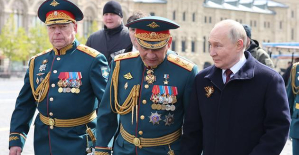 In Russia, Vladimir Putin stigmatizes “Western elites”
In Russia, Vladimir Putin stigmatizes “Western elites” Body warns BBVA that "the Government has the last word" in the takeover bid for Sabadell
Body warns BBVA that "the Government has the last word" in the takeover bid for Sabadell Finding yourself face to face with a man or a bear? The debate that shakes up social networks
Finding yourself face to face with a man or a bear? The debate that shakes up social networks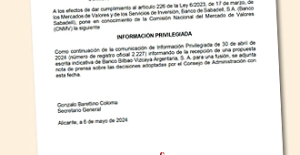 Sabadell rejects the merger with BBVA and will fight to remain alone
Sabadell rejects the merger with BBVA and will fight to remain alone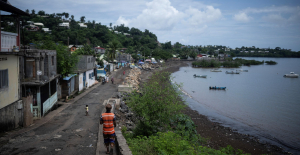 Fatal case of cholera in Mayotte: the epidemic is “contained”, assures the government
Fatal case of cholera in Mayotte: the epidemic is “contained”, assures the government The presence of blood in the urine, a warning sign of bladder cancer
The presence of blood in the urine, a warning sign of bladder cancer A baby whose mother smoked during pregnancy will age more quickly
A baby whose mother smoked during pregnancy will age more quickly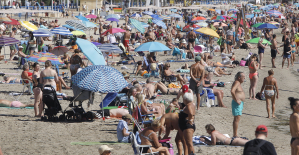 The euro zone economy grows in April at its best pace in almost a year but inflationary pressure increases
The euro zone economy grows in April at its best pace in almost a year but inflationary pressure increases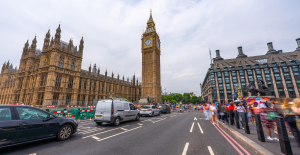 The United Kingdom is turning the page on recession
The United Kingdom is turning the page on recession Apple alienates artists with the ad for its new iPad praising AI
Apple alienates artists with the ad for its new iPad praising AI Duration, compensation, entry into force... Emmanuel Macron specifies the contours of future birth leave
Duration, compensation, entry into force... Emmanuel Macron specifies the contours of future birth leave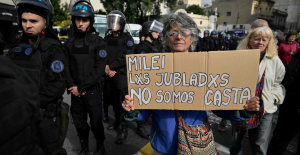 Argentina: the street once again raises its voice against President Javier Milei
Argentina: the street once again raises its voice against President Javier Milei Taylor Swift in Paris: a paradoxical triumph
Taylor Swift in Paris: a paradoxical triumph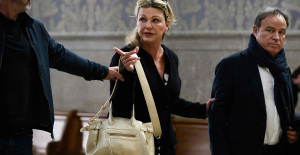 Jeane Manson released from hospital Friday after heart attack
Jeane Manson released from hospital Friday after heart attack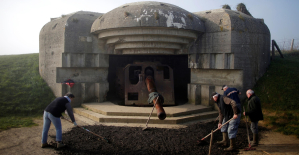 In Normandy, frescoes and bunkers from 1939-1945 come back to life in bars, lodges and exhibitions
In Normandy, frescoes and bunkers from 1939-1945 come back to life in bars, lodges and exhibitions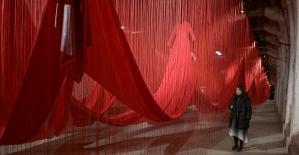 In an Austrian concentration camp, the ghosts of the deportees summoned by Chiharu Shiota
In an Austrian concentration camp, the ghosts of the deportees summoned by Chiharu Shiota Omoda 7, another Chinese car that could be manufactured in Spain
Omoda 7, another Chinese car that could be manufactured in Spain BYD chooses CA Auto Bank as financial partner in Spain
BYD chooses CA Auto Bank as financial partner in Spain Tesla and Baidu sign key agreement to boost development of autonomous driving
Tesla and Baidu sign key agreement to boost development of autonomous driving Skoda Kodiaq 2024: a 'beast' plug-in hybrid SUV
Skoda Kodiaq 2024: a 'beast' plug-in hybrid SUV The home mortgage firm rises 3.8% in February and the average interest moderates to 3.33%
The home mortgage firm rises 3.8% in February and the average interest moderates to 3.33% This is how housing prices have changed in Spain in the last decade
This is how housing prices have changed in Spain in the last decade The home mortgage firm drops 10% in January and interest soars to 3.46%
The home mortgage firm drops 10% in January and interest soars to 3.46% The jewel of the Rocío de Nagüeles urbanization: a dream villa in Marbella
The jewel of the Rocío de Nagüeles urbanization: a dream villa in Marbella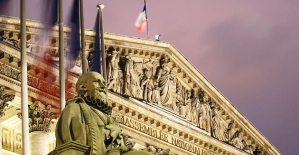 Diving into the secrets of the National Assembly
Diving into the secrets of the National Assembly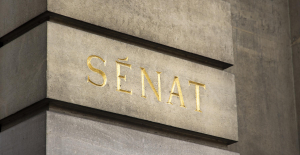 Institutions: senators want to restore the accumulation of mandates and put an end to the automatic presence of ex-presidents on the Constitutional Council
Institutions: senators want to restore the accumulation of mandates and put an end to the automatic presence of ex-presidents on the Constitutional Council Europeans: David Lisnard expresses his “essential and vital” support for François-Xavier Bellamy
Europeans: David Lisnard expresses his “essential and vital” support for François-Xavier Bellamy Facing Jordan Bardella, the popularity match turns to Gabriel Attal’s advantage
Facing Jordan Bardella, the popularity match turns to Gabriel Attal’s advantage These French cities that will boycott the World Cup in Qatar
These French cities that will boycott the World Cup in Qatar Atalanta-OM: the summary of the Olympian debacle in video
Atalanta-OM: the summary of the Olympian debacle in video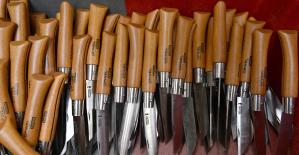 Paris 2024 Olympics: were knives available for purchase on the Marseille Olympic site?
Paris 2024 Olympics: were knives available for purchase on the Marseille Olympic site? Atalanta-OM: eliminated in the semi-final of the Europa League, Joaquin Correa will no longer be an Olympian next season
Atalanta-OM: eliminated in the semi-final of the Europa League, Joaquin Correa will no longer be an Olympian next season Rudy Gobert, in the NBA and with the Blues, much more than a bad boy
Rudy Gobert, in the NBA and with the Blues, much more than a bad boy